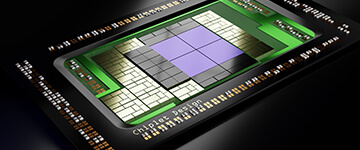September 27, 2022
Chiplets keep us moving beyond Moore’s Law
 Moore’s Law, the idea that the number of transistors in a circuit board doubles every two years, had a good and consequential run. First posited in 1965, the idea served as a kind of business model for the entire semiconductor industry. For decades, the pace continued close to as predicted.
Moore’s Law, the idea that the number of transistors in a circuit board doubles every two years, had a good and consequential run. First posited in 1965, the idea served as a kind of business model for the entire semiconductor industry. For decades, the pace continued close to as predicted.
First, it was printed circuit boards and motherboards, each chip situated some distance away from another. Over time, we realized that the long, connecting communication lines created electric capacitances and resistances that slowed things down.
With speed—ultimately, the name of the game—the industry looked for ways to put individual chips directly next to each other with minuscule wiring between them. These were eventually built-in layers and silicon has served as the packaging for distributing the wiring. Modern, high-performance chips rely on miles of wires under the chip that are just nanometers wide, essentially tiling together computational functions, memory functions, management functions, etc.
Despite the amazing, shrinking geometries, chips still run on a clock that essentially tells circuits how to process information. As the gigahertz get to higher frequencies, the wiring between the chips becomes the bottleneck. The next big breakthrough aims to partly address this bottleneck and keep the chip industry moving beyond Moore. They’re called chiplets.
A chiplet is a part of a processing module that makes up a larger integrated circuit. Instead of manufacturing a processor on a single piece of silicon with cores, chiplets allow multiple smaller chips to make up a larger integrated circuit.
The basic idea is that modular chips, or chiplets, can be assembled in a package and connected using a die-to-die interconnect. Theoretically, this will be an inexpensive way to assemble various types of chips in an efficient package without needing to shrink the underlying structures, which is a real current challenge.
Some of the other advantages the chiplet model has over the system-on-chip (SoC) approach include:
• The same chiplet can be used in many different devices.
• Each chiplet can be made with different processes, materials or nodes – optimized for a function.
• Chiplets can be tested before assembly.
• Individualized solutions can be tailored to specific requirements.
• In large quantities, the chiplet manufacturing and interfaces can be designed by the same manufacturer.
While there is still a long way to go, especially in the manufacturing of this product, chiplets are a promising boost for a chip industry that’s being stressed at all ends. As manufacturing, improves and standardizes, HEIDENHAIN will be right there. As we always have, we’re here to provide motion control advice and technology, no matter how precise, big or small.

